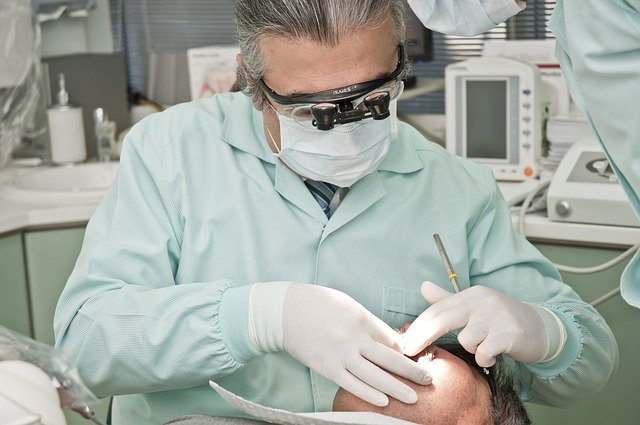Signs That You Need to Visit a Podiatrist
Do you suffer from frequent foot pain? Do you feel like there’s always something wrong with your feet? If so, it may be time to make an appointment who specializes in foot health and healing.
There are many signs that you need to visit a podiatrist, including pain, swelling, numbness, or tingling in your feet or toes, calluses or corns on the bottom of your feet, sores that won’t heal on the bottom of your feet or toes, cracking or peeling skin on the soles of your feet or your toes, and ingrown toenails. Here is the list that we made for you:
1) Red, Hot, Swollen Toenails
A variety of conditions can cause painful redness, swelling, and/or warmth in your toes. Some of these are harmless (such as wearing new shoes), but others may be serious. Redness around your toenails can indicate an infection, injury, or allergy.
Swelling can be caused by high blood pressure and nail fungus is also common among older adults. If you notice any signs that you need to visit a podiatrist, it’s important not to ignore them; minor foot injuries are easy for people with diabetes or nerve damage such as neuropathy to ignore because they aren’t immediately painful like other types of wounds.
2) Painful Corns
Corns and calluses can occur anywhere on your feet. This can make them difficult to treat because they are often in hard-to-reach areas that aren’t easily moisturized. Since these rough spots are caused by too much pressure or friction, it is recommended that you get a professional pedicure as opposed to doing it yourself at home.
A licensed podiatrist may also use an electric shaver, pumice stone, or foot file to smoothen out these small and stubborn bumps. To reduce pressure from calluses or corns, consider wearing softer shoes that fit well and provide appropriate support for your feet. Be sure to break in new shoes gradually so your feet have time to adjust!
3) Ingrown Nails
Ingrown nails happen when a nail grows into an adjacent part of your skin. This can be painful and may lead to infection. It's important to see your podiatrist if you're experiencing an ingrown nail. Your doctor can surgically remove it or trim it down, which will allow you to grow a healthy new nail.
4) Walking Pains
There’s nothing wrong with walking, but it does put added stress on your feet. When you step down, all of your weight is directed through your heel and out to your toes. Unfortunately, many people (and most footwear) don’t provide adequate cushioning for that shock. Result? Aching heels and foot pain.
If you’re experiencing regular foot pain after walking distances or over longer periods, schedule an appointment with a podiatrist who can evaluate whether there are biomechanical issues at play (i.e., your gait is causing issues). They may recommend some new shoes or orthotics (shoe inserts) that may help relieve those aches and pains while providing long-term support and protection.
5) Heel Pain
If you’re experiencing pain in your heel, it can be caused by many different things. If you experience pain while walking or even just standing, then you may want to schedule an appointment with your podiatrist as soon as possible.
A common cause of heel pain is plantar fasciitis, which occurs when small tears develop in your plantar fascia ligament and lead to inflammation in that area. Pain can vary from person to person and is typically worse in the morning or after periods of sitting. It can also radiate up into your calf muscles if untreated and become increasingly painful over time.
6) Bunion Sores
There is a joint on either side of your big toe called your first metatarsophalangeal (MTP) joint. While it's not a bone or muscle, it works in conjunction with both and provides stability for you during movement.
Most bunions are caused by years of wearing ill-fitting shoes that squeeze your toes together, forcing them into an unnatural position. The constant pressure puts stress on that joint and can lead to bunion sores and inflammation which causes even more discomfort.
7) Blisters on your Feet
Blisters on your feet could mean you’re dealing with friction and rubbing that comes from new shoes or ill-fitting footwear. Foot blisters are also common among people who have diabetes since damaged nerve endings don’t send out pain signals when there’s an injury.
To prevent foot blisters, avoid going barefoot in public areas—this is how most people contract foot blisters. If you do choose to go barefoot in public places, avoid hot pavement, which can burn your feet and lead to infection if any cuts are present. As for heels and toes?
8) Fungal Infections on your Skin (aka Athlete's Foot)
An athlete's foot is an infection of several different types of fungi. It can affect your hands, fingers, between your toes, and other areas. When you have an athlete's foot between your toes, it may spread to other people that come in contact with them through direct contact or indirect contact (i.e., sharing shoes).
The fungus grows best in warm, moist environments so prevention is key. If you must wear closed-toed shoes at work or when walking around town, look for an anti-fungal powder or gel that you can apply to your feet before putting on socks and closed-toed shoes.
9) Your Shoes don't Fit Properly (If they Hurt in Any Way!)
Shoes are your feet's only protection, so they must fit properly. Always choose shoes that fit well and feel comfortable. Don't wait until you're hurting before visiting a podiatrist. As they can assess whether any pain is caused by an existing condition or if it's due to wearing ill-fitting shoes.
Many foot problems can be alleviated or cured through regular visits to your local podiatrist. By avoiding problems early on, you'll be able to enjoy walking and running without discomfort for many years to come!
10) Athletic Injuries are Not Healing as Expected
If you’re feeling pain while running, playing sports, or performing exercises, it may be time to see a podiatrist. Our body often has trouble healing athletic injuries because of how active we are—muscles and tendons can tear more easily than if you’re sedentary.
Visiting your local podiatry office is ideal for finding out what’s going on with your feet and making sure that any issues that arise from being active don’t worsen and turn into something more severe. Many podiatrists can also prescribe orthotics to provide extra support during strenuous activity.
Conclusion
If you feel that one or more of these symptoms sounds like you, it’s time to visit your podiatrist. The sooner he or she examines and treats your foot, toe, or ankle pain, inflammation, or injury, the faster you can get back on your feet.



